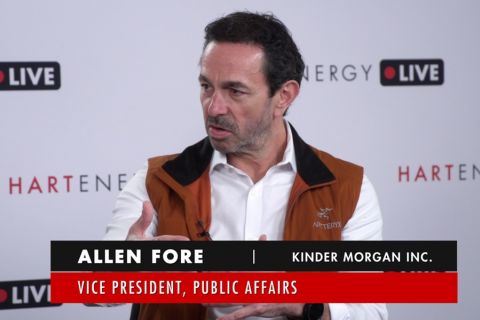U.S. corporates and private equity firms are increasingly eyeing Canadian oil and gas companies for acquisition, drawn by lower valuations, ample fossil fuel reserves and improving market access, according to dealmakers and analysts.
Companies operating in the huge Montney shale formation, which spans northern Alberta and British Columbia and accounts for roughly half Canada's gas production, are most attractive to potential buyers. Assets located in the smaller Duvernay and Clearwater formations are also piquing interest.
The surge in interest comes in the wake of major U.S. oil sector deals: Exxon Mobil's $60 billion bid for Pioneer Natural Resources and Chevron's $53 billion agreement to acquire Hess.
Both deals were driven in part by the buyers' need to increase drilling inventory and secure future production in key U.S. shale basins after several years of limited exploration spending.
Canada is home to the world's third largest oil reserves, most of it in the form of bitumen in oil sands concentrated in Alberta.
Scott Barron, head of Calgary investment banking at TD Securities, however, said there is far more interest today in the non-oil sands sector of the Canadian energy industry than at any time in the past five or six years.
"One of the major driving factors for U.S. companies to consider Canadian acquisitions is that there's the potential for Canadian drilling inventory to be less expensive than what they're seeing in the United States," Barron added. He declined to name any potential suitors.
Canadian energy companies tend to trade at a discount to U.S. firms partly due to years of constrained market access and congestion on export pipelines, which forced producers to accept significant discounts on their oil and gas and made them less attractive to foreign buyers.
Valuation discounts
Based on LSEG data, the enterprise value to EBITDA (earnings before interest, tax, depreciation and amortization) multiple of Canada's largest Montney producer, ARC Resources and seven of its peers averages 4.1, compared with 5.0 for Pioneer, the largest producer in the U.S. Permian basin, and its peers.
ARC did not respond to a request for comment.
Already, U.S. acquisitions of Canadian oil and gas targets have more than doubled from last year and hit a 12-year high of $3.2 billion so far in 2023, according to LSEG data.
Accounting for the majority of that jump was the ConocoPhillips purchase of a remaining 50% interest in the Surmont oil sands facility held by TotalEnergies for $2.7 billion.
"We're seeing a number of inbound conversations from U.S. private equity funds, which is more of a recent trend - not something that we would have seen a couple of years ago," said Adil Kieray, head of energy M&A at BMO, though he cautioned it was still early days.
Another substantial draw for investors is the largely untapped potential of Canadian shale.
However, market access is set to improve once the Canadian government-owned Trans Mountain pipeline expansion starts transporting an additional 590,000 bbl/d of crude oil to Canada's Pacific Coast next year.
The Shell-led LNG Canada project, slated to begin exporting 14 million tonnes per annum of liquefied natural gas around 2025-primarily sourced from the Montney-is another boon for the market.
A recent report by RBC Capital Markets characterized the 50,000 square-mile (32 million acres) Montney play, which yields approximately 10 billion cubic feet a day of gas, as a "Canadian champion backstopping national supplies", with only about 8% of the play's recoverable gas extracted so far.
Jeremy McCrea, an analyst with Raymond James, said Montney well productivity was improving every year, while the biggest U.S. shale formations, the Permian and Eagle Ford, appear to be reaching their peak.
"As the U.S. basins slow and we see a lot of big consolidations, it's natural for operators to look up north," he said.
Recommended Reading
Yellen Expects Further Sanctions on Iran, Oil Exports Possible Target
2024-04-16 - U.S. Treasury Secretary Janet Yellen intends to hit Iran with new sanctions in coming days due to its unprecedented attack on Israel.
The Jones Act: An Old Law on a Voyage to Nowhere
2024-04-12 - Keeping up with the Jones Act is a burden for the energy industry, but efforts to repeal the 104-year-old law may be dead in the water.
Kinder Morgan Exec: Building Pipelines ‘Challenging, but Manageable’
2024-04-05 - Allen Fore, vice president of public affairs for Kinder Morgan, said building anything, from a new road to an ice cream shop, can be tough but dealing with stakeholders up front can move projects along.
FERC Again Approves TC Energy Pipeline Expansion in Northwest US
2024-04-19 - The Federal Energy Regulatory Commission shot down opposition by environmental groups and states to stay TC Energy’s $75 million project.
CEO: Linde Not Affected by Latest US Green Subsidies Package Updates
2024-02-07 - Linde CEO Sanjiv Lamba on Feb. 6 said recent updates to U.S. Inflation Reduction Act subsidies for clean energy projects will not affect the company's current projects in the United States.



